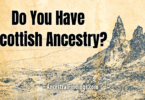From the rolling countryside of France to the forests of Canada and the bayous of Louisiana, the story of French ancestry spans continents and centuries. Families carried their language, faith, and traditions across oceans, leaving a legacy that still shapes the modern world.
If your family has roots in North America, especially in Canada, New England, or Louisiana, there’s a good chance some of those roots trace back to France. The French presence in the New World is older and broader than many realize — beginning in the early 1500s and continuing in waves right into the 19th century.
French ancestry can connect you to explorers and fur traders, farmers and fishermen, soldiers and settlers, artisans and clergy. Each wave of migration tells a different story, but all share one theme: the courage to seek opportunity in a distant land while carrying the soul of France with them.
France Before the Great Migrations
To understand your French ancestors, it helps to know what France was like before they left.
The kingdom was vast and diverse — from the rocky shores of Brittany and Normandy to the vineyards of Burgundy, the high mountains of the Alps, and the sun-soaked fields of Provence.
Each region had its own dialect, customs, and way of life.
A farmer from Poitou spoke differently from a merchant in Paris. A fisherman from Normandy had a life utterly unlike a silk weaver from Lyon.
By the 1600s, France was one of Europe’s great powers, but life for ordinary people could be harsh. Wars, famine, high taxes, and limited opportunity drove many to consider a life abroad. The government and the Catholic Church actively encouraged colonization, hoping to expand trade and faith.
The result was one of the earliest and most ambitious colonization efforts of any European nation — what became known as New France.
The First French Settlers in the New World
In 1608, explorer Samuel de Champlain founded Quebec City, establishing a permanent French foothold in North America. Within a generation, families began to arrive — farmers, soldiers, and artisans, recruited from regions like Normandy, Brittany, and Poitou.
These settlers built towns along the St. Lawrence River, from Quebec to Montreal, and into the vast forests beyond. They traded with Indigenous peoples, often forming alliances and marriages that shaped both cultures.
One of the most distinctive features of early New France was its family structure. Unlike some colonies that relied heavily on male settlers, France made a deliberate effort to send women. Between 1663 and 1673, more than 700 young women — known as the Filles du Roi or Daughters of the King — were sent to New France, provided with dowries and encouraged to marry and raise families.
Their descendants number in the millions today, spread across Canada, the United States, and beyond.
Life in New France
Life in New France was demanding but full of opportunity.
The climate was harsher than anything most settlers had known. Winters could last six months, and snowdrifts buried entire villages. But land was plentiful, and for many, that was worth the hardship.
A typical family might clear ten acres of land the first year, build a small log house, and gradually expand their fields. Catholicism formed the center of community life. Parish churches were built as soon as settlers could afford stone and timber, and priests often served multiple villages, traveling on snowshoes in winter.
Many of the surnames familiar in French Canadian genealogy today — Tremblay, Gagnon, Côté, Boucher, Lefebvre, Girard — trace back to these first families. Some names changed spelling over time as they crossed languages and borders, but their origins are well documented in the early parish registers of Quebec.
The Acadians: A Distinct People and a Great Loss
Alongside New France, another French community flourished farther east — Acadia, located in what is now Nova Scotia, New Brunswick, and Prince Edward Island.
The Acadians were farmers and fishermen who built a quiet, close-knit culture rooted in cooperation and family ties. Their unique French dialect and way of life set them apart from the settlers along the St. Lawrence.
Then came tragedy.
In 1755, during the Seven Years’ War, the British authorities began forcibly removing the Acadians from their homes in what became known as Le Grand Dérangement — the Great Expulsion. Families were separated, homes and churches burned, and thousands deported to the American colonies, England, and France.
Some made their way back years later to the Canadian Maritimes. Others resettled in Louisiana, where their descendants became known as the Cajuns — a name that still carries echoes of “Acadian.”
If your ancestors lived in Louisiana, eastern Canada, or even Maine, there’s a strong chance that Acadian roots form part of your story.
The French in Louisiana
While the Acadians arrived by tragedy, another French culture took root in Louisiana through planned settlement.
French explorers had claimed the Mississippi River valley in the late 1600s, naming it La Louisiane after King Louis XIV.
In the early 1700s, settlers from France and the Caribbean began arriving, bringing African slaves and free people of color who shaped Louisiana’s unique Creole culture.
The mix of European, African, and Indigenous influences created one of the most distinctive cultures in North America — where French remained a living language well into the 20th century.
If you have French ancestors from Louisiana, you may find records not only in parish archives but in colonial notarial records, which documented everything from marriages to property sales. These detailed legal files are a genealogical gold mine.
Huguenots: The French Protestants Who Fled
Not all French migration was Catholic.
In the late 1600s, thousands of Huguenots — French Protestants — fled persecution after the Revocation of the Edict of Nantes in 1685.
They scattered across Europe, settling in England, the Netherlands, Switzerland, and Germany. Many later crossed to North America, particularly to the Carolinas, Virginia, and New York.
Huguenot communities were known for literacy and craftsmanship. Their descendants include prominent figures in American history, from Paul Revere to Alexander Hamilton’s mother’s family.
If your ancestors carried French-sounding names but were Protestant or associated with early colonial America, Huguenot roots are worth exploring.
Later Waves of French Immigration
Even after France lost most of its North American territories in the 18th century, migration didn’t stop.
In the 1800s, new waves of French settlers arrived in North America, driven by poverty, revolution, and the lure of opportunity.
Artisans and farmers came from regions like Alsace and Lorraine, especially after the Franco-Prussian War of 1870. Others came as laborers or craftsmen to industrial towns in New England, the Midwest, and Canada.
If you have ancestors from Michigan, Illinois, or northern New York, it’s possible that they came during this later period.
Understanding French Names and Family Clues
French naming customs can tell you a lot about your ancestors.
Traditionally, children were named after saints or close relatives, often with Marie or Jean included as a prefix. It was common for several children in a family to share the same first name but have different middle names.
Surnames sometimes came with “dit names” — nicknames or secondary family names that helped distinguish branches of large families. For example, a man might be known as Jean Gagnon dit Bellefleur, meaning “John Gagnon, called Bellefleur.” Over time, descendants might adopt Bellefleur as their surname, or drop it entirely.
Understanding dit names is crucial when tracing French Canadian and Louisiana lines, as they often explain why a surname suddenly changes in parish records.
Where to Find French Genealogy Records
France has some of the most detailed civil and church records in the world, and Canada preserved them with equal care. The challenge is knowing where to look.
In France:
- The Archives départementales (regional archives) hold parish and civil records dating back to the 1500s. Most are digitized and freely available online.
- The Archives nationales de France in Paris contain military, notarial, and immigration records.
- The Mémoire des Hommes database includes service files for French soldiers, sailors, and colonists.
In Canada:
- Bibliothèque et Archives nationales du Québec (BAnQ) maintains parish registers from 1621 onward.
- The PRDH (Programme de recherche en démographie historique) offers an indexed database of early Quebec records.
- Drouin Collection (on Ancestry and GenealogyQuebec) includes millions of digitized Catholic parish records.
In Louisiana:
- The Louisiana State Archives and local parishes preserve French colonial and Creole-era documents.
- Notarial and land records, often in French, can reveal family relationships in extraordinary detail.
In the United States:
- Huguenot records are maintained by the Huguenot Society of America and local branches.
- Census and church records in New York, South Carolina, and Virginia often list French families.
The French Legacy in DNA and Culture
Modern DNA testing has made tracing French heritage easier than ever.
French genetic clusters often point to specific regions: Brittany, Normandy, Poitou, or Alsace-Lorraine. If you match with clusters in Quebec, Acadia, or Louisiana, that likely means your French line traveled across the Atlantic centuries ago.
But ancestry is more than DNA. The French influence still shows up in architecture, surnames, cooking, and even the way we speak. Words like prairie, portage, and coup d’état entered English through centuries of French presence.
You might find your family’s heritage in a Cajun fiddle tune, a Quebec folktale, or a recipe passed down through generations.
Bringing It All Together
French ancestry connects you to one of the great movements of people in world history — a story that runs from the Loire Valley to the Mississippi River, from Paris to Quebec City, from Acadia to Louisiana.
To trace it is to see how faith, language, and family endure through change. It’s to understand that history doesn’t live in books alone; it lives in names, in stories, and in the choices people made when they crossed the sea.
Share Your Story
Do you have French ancestors in your family?
Perhaps you’ve uncovered a Fille du Roi, a Huguenot craftsman, or an Acadian family who found a home in Louisiana.
I’d love to hear your story. Share your discoveries and family connections in the comments on YouTube or Facebook, and join others exploring their heritage in Journeys of Our Ancestors.
Each story adds another thread to the grand tapestry of our shared past — the journey that began in France and continues today.






